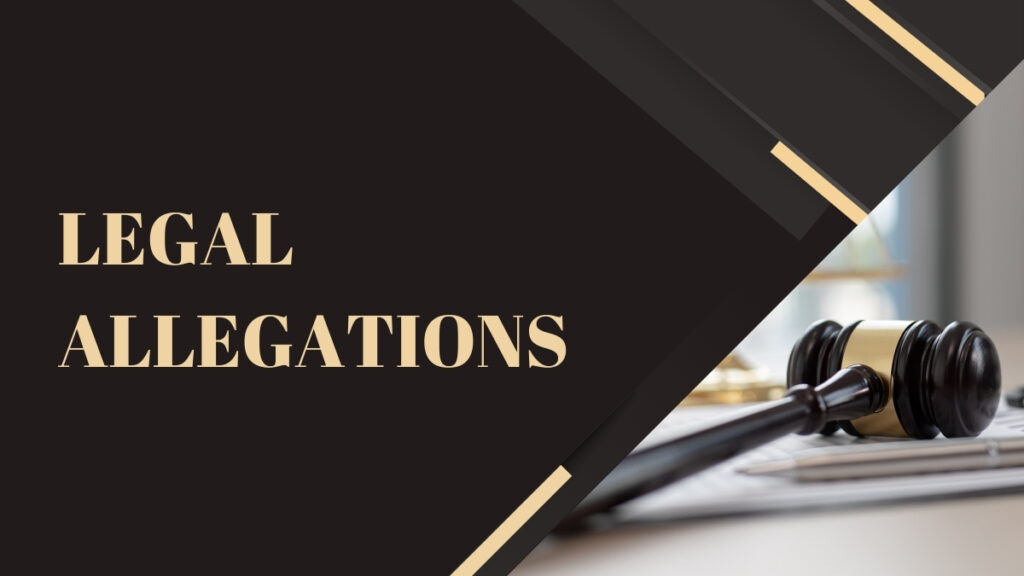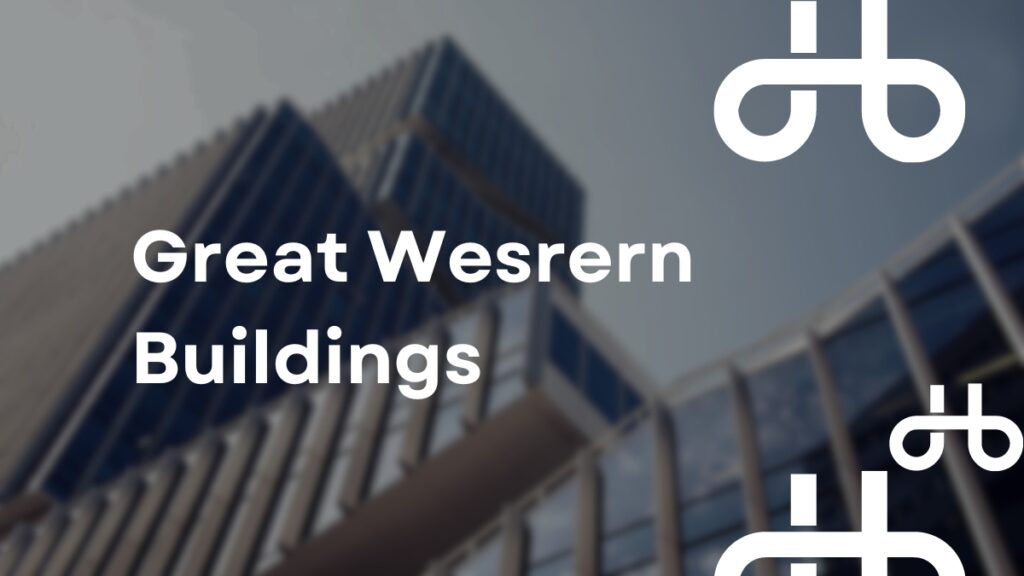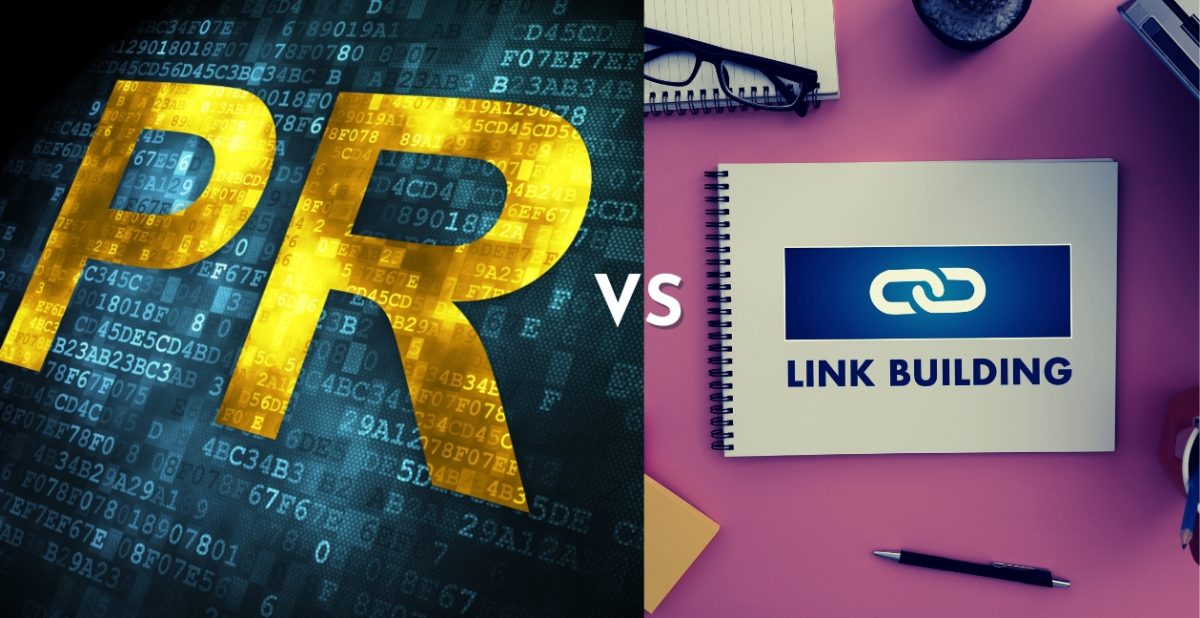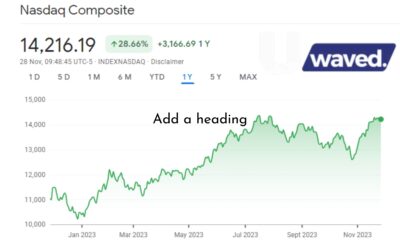Business
Great Western Buildings Lawsuit: Key Insights

Introduction to Great Western Buildings Lawsuit
Lawsuits have a way of capturing our attention, don’t they? They draw us in with their intrigue, their drama, and the promise of revealing hidden truths. Well folks, get ready to dive into one such captivating case – the Great Western Buildings Lawsuit! In this blog post, we’ll explore the allegations against Great Western Buildings Company, examine the key players involved, and discuss the potential impact on customers and employees. So buckle up and prepare for a wild ride through the twists and turns of this legal battle that has left many wondering what lies ahead. It’s time to unravel the secrets behind the Great Western Buildings Lawsuit!
Background on Great Western Buildings Company
Great Western Buildings is a renowned construction company that has been serving clients in the industry for over three decades. With a strong reputation for delivering high-quality buildings, they have become a trusted name in the market.
The company was founded by John Stevens in 1985 with a vision to provide innovative and sustainable building solutions. Over the years, Great Western Buildings has successfully completed numerous projects ranging from residential homes to commercial complexes.
One of their key strengths lies in their ability to customize designs according to client requirements. Great Western Buildings takes pride in offering flexible and tailored solutions that meet both functional and aesthetic needs. Their team of experienced architects, engineers, and builders work closely with clients throughout the entire process to ensure customer satisfaction.
Moreover, Great Western Buildings also prioritizes sustainability by incorporating eco-friendly materials and energy-efficient systems into their projects. They strive to reduce environmental impact while providing durable structures that stand the test of time.
As a result of their commitment to excellence, Great Western Buildings has received several accolades within the industry. Their track record speaks for itself as they continue to earn recognition for their exceptional craftsmanship and dedication.
The background of Great Western Buildings showcases its long-standing presence and expertise in delivering top-notch construction services. With an emphasis on customization, sustainability, and quality, this reputable company has built a solid foundation based on trustworthiness and professionalism within the industry.
Allegations against Great Western Buildings

Allegations against Great Western Buildings have caused quite a stir in the construction industry. The company, known for its expertise in building custom steel structures, is now facing serious accusations that could potentially tarnish its reputation.
One of the main allegations against Great Western Buildings is that they have been using substandard materials in their construction projects. Customers claim that the buildings they received were not up to code and did not meet safety standards. This has raised concerns about the structural integrity of these buildings and the potential risks they pose to occupants.
Another accusation leveled against Great Western Buildings is shoddy workmanship. Customers allege that there were numerous defects and flaws in their completed structures, ranging from leaking roofs to faulty electrical systems. These complaints suggest a lack of attention to detail and quality control on behalf of the company.
Furthermore, some customers claim that Great Western Buildings engaged in deceptive business practices by misrepresenting their services and capabilities. They argue that the company made promises it couldn’t keep, leading to costly delays and additional expenses for customers.
The allegations have led many customers to question whether they can trust Great Western Buildings with future projects or if they should seek alternative options for their construction needs. Additionally, employees are concerned about job security as negative publicity surrounding the lawsuit may impact business operations.
It’s important to note that these are just allegations at this point, and no final judgment has been reached on any of these claims. However, regardless of the outcome of this lawsuit, it serves as a reminder for both companies and consumers alike about the importance of due diligence when selecting a contractor or builder.
In such situations, it’s crucial for customers to thoroughly research potential contractors before entering into any agreements. This includes checking references, reviewing past projects, and conducting background checks on companies’ certifications and licenses.
For businesses like Great Western Buildings Company themselves, maintaining transparency throughout all stages of a project can help build trust with clients while mitigating future legal risks. Clear and comprehensive contracts, regular communication, and a commitment to resolving any issues
Key Players in the Lawsuit
1. Great Western Buildings Company:

As the defendant in this lawsuit, Great Western Buildings is at the center of attention. This company has been a prominent player in the construction industry for years, known for its expertise in designing and manufacturing steel buildings. However, allegations have surfaced that raise serious concerns about their business practices.
2. Plaintiffs:
The plaintiffs are individuals or entities who have filed lawsuits against Great Western Buildings, claiming various damages and losses as a result of their dealings with the company. These could include customers who experienced financial harm due to faulty construction or employees who suffered workplace injuries.
3. Legal Team:
Both sides are represented by skilled legal teams consisting of attorneys specializing in construction law and litigation. These professionals play a crucial role in presenting evidence, cross-examining witnesses, and arguing their clients’ cases before the court.
4. Witnesses:
Throughout the proceedings, witnesses may be called upon to provide testimony regarding their experiences with Great Western Buildings. These could range from dissatisfied customers recounting issues they encountered during construction projects to former employees shedding light on potential safety hazards within company operations.
5. Judge:
The judge presiding over this case holds significant authority in determining how it progresses and ultimately reaches a resolution. Their responsibility is to ensure fair proceedings while interpreting and applying relevant laws impartially.
With all these key players involved, it’s clear that this lawsuit has far-reaching implications not only for Great Western Buildings but also for those directly affected by their actions or alleged misconduct.
Impact of the Lawsuit on Customers and Employees
The lawsuit against Great Western Buildings has undoubtedly had a significant impact on both its customers and employees. For starters, customers who have already purchased buildings from the company may be left feeling uncertain about their investments. They may worry about the quality of their structures or whether they will receive any necessary repairs or support in the future.
Furthermore, potential customers who were considering purchasing a building from Great Western may now reconsider due to the negative publicity surrounding the lawsuit. This could result in a decline in sales for the company, potentially leading to financial instability.
On the employee side, there is likely to be a sense of unease and anxiety among workers at Great Western Buildings. The uncertainty surrounding the outcome of this lawsuit could lead to job insecurity and possible layoffs if things do not go well for the company.
Moreover, employees may also experience damage to their professional reputation as being associated with a company involved in legal disputes can tarnish one’s image within their industry.
It is clear that both customers and employees are directly affected by this ongoing lawsuit against Great Western Buildings. The long-lasting consequences remain unknown until further developments take place.
Possible Outcomes of the Lawsuit
The Great Western Buildings lawsuit has attracted significant attention, leaving many wondering about the potential outcomes. While it’s challenging to predict with certainty how the case will unfold, there are a few possible scenarios that could arise.
If the allegations against Great Western Buildings are proven true, they may face severe legal consequences. This could include hefty fines and penalties, as well as damage to their reputation within the industry. Additionally, individual employees implicated in any wrongdoing may also face personal liability.
On the other hand, if Great Western Buildings is able to successfully defend themselves against these allegations, they can emerge from this lawsuit relatively unscathed. This would enable them to continue operating without major disruptions or financial setbacks.
Another possibility is that both parties involved reach a settlement agreement outside of court. In such a scenario, it’s likely that some form of compensation or resolution would be provided either to affected customers or in relation to employee grievances.
Ultimately though, only time will tell what direction this lawsuit will take and what outcomes will transpire for Great Western Buildings and all those involved. It’s crucial for everyone impacted by this situation – be it customers or employees –to closely monitor developments as they unfold.
By keeping an eye on these potential outcomes and staying informed about any updates regarding the case, individuals can better navigate through its implications and make informed decisions moving forward
Lessons Learned from the Great Western Buildings Lawsuit
When it comes to legal battles, there are always valuable lessons to be learned. The Great Western Buildings lawsuit is no exception. This high-profile case has shed light on several key areas that businesses and individuals can take note of.
One important lesson is the significance of transparency and honesty in business dealings. The allegations against Great Western Buildings point to potential deceitful practices, which have undoubtedly tarnished their reputation. Customers now realize the importance of conducting thorough research before entering into any agreements or contracts.
Another lesson we can glean from this lawsuit is the need for clear communication between all parties involved. A lack of proper communication often leads to misunderstandings and disputes down the line. It’s crucial for companies like Great Western Buildings to prioritize effective communication channels with their customers and employees alike.
Additionally, this case highlights the importance of legal compliance within an organization. Companies must adhere to industry regulations and standards in order to avoid costly lawsuits like this one. Implementing robust internal controls and regularly reviewing policies can help prevent such situations from arising.
Furthermore, it serves as a reminder that reputation matters greatly in today’s interconnected world. Negative publicity resulting from a lawsuit can have severe consequences for both current operations and future growth opportunities. Building a strong brand image through ethical practices should always be a top priority for businesses.
This lawsuit underscores the value of proactive risk management strategies. Identifying potential legal risks early on allows companies to take necessary precautions or make necessary changes before problems escalate into full-blown lawsuits.
There are numerous lessons we can learn from the Great Western Buildings lawsuit: transparency, clear communication, adherence to regulations, reputation management, and proactive risk management are all critical elements for success in today’s business landscape.
You Might Also Like: Trulife Distribution Lawsuit
Conclusion
The Great Western Buildings lawsuit has brought to light several key insights into the practices and operations of the company. It is clear that allegations against Great Western Buildings have raised concerns about their business practices, potentially impacting both customers and employees.
While it is important to remember that these are allegations at this stage, the impact on affected individuals cannot be ignored. Customers who have purchased buildings from Great Western may now find themselves questioning the quality and safety of their structures. Employees may also face uncertainties regarding job security and future prospects with the company.
As for possible outcomes of the lawsuit, it remains to be seen how things will unfold. The legal process will determine whether or not there is merit to the allegations made against Great Western Buildings. Depending on the findings, there could be significant repercussions for both the company’s reputation and financial standing.
Regardless of how this particular case plays out, there are valuable lessons to be learned from this situation. For businesses, transparency in all aspects of operations is crucial in building trust with customers and employees alike. Regular inspections and independent audits can help ensure compliance with industry standards.
Customers should always conduct thorough research before making a purchase or entering a contract with any company. Checking reviews, references, and certifications can provide insight into a business’s credibility.
While we await further developments in the Great Western Buildings lawsuit, it serves as a reminder that accountability and ethical practices should always take precedence within any organization.
Business
Digital PR and Link Building: What They Are, Differences, Characteristics, and Objectives

In the realm of online marketing, the terms “digital PR” and “link building” are commonly used, representing two important strategies in this field.
Digital PR is a marketing strategy aimed at enhancing the online visibility of a company or brand through managing relationships with digital media, bloggers, influencers, and other online figures. Link building is an SEO (Search Engine Optimization) strategy focused on acquiring high-quality links from other websites to one’s own site. These two strategies often overlap, as obtaining links from authoritative sources can also be an objective of digital PR. For both strategies, platforms like SeoLuxury.com can be used, offering an all-in-one tool to improve search engine rankings. Through the platform, you can find websites to propose your content to or use their expert copywriters for content creation if preferred.
What is Link Building and How to Do It
Link building is an SEO strategy that aims to obtain links from other websites to one’s own site to improve search engine rankings. Inbound links (backlinks) from authoritative and relevant websites can increase the authority of your site and help improve its visibility in search results (the SERP, Search Engine Results Page). The first phase of link building involves finding websites from which you can obtain backlinks. These sites should be relevant to your niche or industry and possess online authority. One of the best ways to obtain backlinks is to create high-quality content, such as informative and interesting guides, articles, infographics, or original studies for the target audience. Track obtained backlinks to ensure they are high quality. Additionally, diversify your link building strategy to maintain natural and credible backlinks in the eyes of search engines. Link building requires time, patience, and a strategic approach, but if done correctly, it can help improve your website’s visibility and search engine rankings in the long term.
Digital PR: What It Is, How It Works, Strategies, and Objectives
Digital PR, short for “Digital Public Relations“, is a marketing strategy that focuses on managing relationships and creating positive online visibility for a company, brand, or individual through the use of digital platforms and social media. The main objective of Digital PR is to build and maintain a strong online reputation and promote brand awareness. It involves managing relationships with digital media, online journalists, bloggers, influencers, and the online public. Digital PR experts aim to establish positive connections with these stakeholders to gain media visibility. Creating interesting, informative, or engaging content, such as press releases, articles, blog posts, videos, and infographics, is fundamental to Digital PR.
Digital PR specialists actively seek opportunities for online media coverage. They send press releases, articles, or contributions to online editors and journalists, hoping they will be published or mentioned in their articles. Digital PR requires constant monitoring of online reputation, meaning the image and perception of the company or brand on the web. Digital PR is essential for building and maintaining a positive online reputation, developing public trust, and improving online visibility.
Business
Exploring the Companies that satisfy sanpo yoshi : Companies Striving for Triple Goodness

Introduction:
In a world where profit often takes precedence, a concept like Sanpo Yoshi emerges as a refreshing paradigm shift. Rooted in Japanese philosophy, Sanpo Yoshi translates to “three-way satisfaction,” emphasizing the harmony and balance between the seller, the buyer, and society. It goes beyond the conventional understanding of business success, advocating for mutual benefit and sustainability. In this comprehensive article, we delve into the essence of Sanpo Yoshi, its principles, and the companies that exemplify its ethos.
Understanding Sanpo Yoshi:
Sanpo Yoshi embodies the holistic approach to business, aiming to benefit not just the company and its customers but also society at large. It encompasses three key stakeholders:
- The Seller:
- The company or the seller must benefit from the transaction, ensuring profitability and sustainability. However, this benefit should not come at the expense of others involved.
- The Buyer:
- Customers should receive value for their money, including quality products or services, fair pricing, and excellent customer service. Their satisfaction is integral to the concept of Sanpo Yoshi.
- Society:
- Beyond the immediate transaction, Sanpo Yoshi considers the broader impact on society. This includes environmental sustainability, social responsibility, and contributions to the community’s well-being.
Principles of companies that satisfy sanpo yoshi:
- Mutual Benefit: Sanpo Yoshi emphasizes win-win situations where all parties involved derive value and satisfaction from the transaction. This principle fosters long-term relationships built on trust and collaboration.
- Sustainable Practices: Companies practicing Sanpo Yoshi prioritize sustainable business practices, minimizing negative environmental impact and ensuring the well-being of future generations.
- Ethical Conduct: Integrity and ethical conduct are fundamental to Sanpo Yoshi. Companies uphold honesty, transparency, and fairness in all their dealings, earning the trust and respect of stakeholders.
- Social Responsibility: Beyond profit-making, Sanpo Yoshi encourages companies to contribute positively to society. This may involve philanthropy, community development initiatives, or ethical sourcing practices.
Companies Embracing Sanpo Yoshi:
- Patagonia:
- Known for its commitment to environmental sustainability, outdoor apparel company Patagonia epitomizes the principles of Sanpo Yoshi. From using recycled materials in its products to donating a portion of its profits to environmental causes, Patagonia prioritizes the well-being of the planet alongside profitability.
- Toms:
- Toms revolutionized the concept of corporate social responsibility with its “One for One” model, where for every pair of shoes sold, a pair is donated to a person in need. This commitment to social impact resonates with the spirit of Sanpo Yoshi, where business success is measured not just in financial terms but also in the positive change it brings to society.
- Interface:
- As a leader in sustainable flooring solutions, Interface exemplifies Sanpo Yoshi through its Mission Zero commitment to eliminate any negative impact the company may have on the environment by 2020. Through innovative product design, waste reduction initiatives, and carbon-neutral operations, Interface demonstrates that profitability and environmental stewardship can go hand in hand.
- Ben & Jerry’s:
- Beyond crafting delicious ice cream flavors, Ben & Jerry’s is renowned for its social activism and commitment to progressive values. From advocating for climate justice to championing fair trade practices, the company aligns its business objectives with broader societal goals, embodying the spirit of Sanpo Yoshi.
Challenges and Opportunities:
While the concept of Sanpo Yoshi offers a compelling framework for businesses to operate ethically and sustainably, it is not without its challenges. Companies may face resistance from shareholders focused solely on short-term profits, logistical hurdles in implementing sustainable practices, and skepticism from consumers wary of greenwashing.
However, the opportunities presented by embracing Sanpo Yoshi are equally significant. Companies that prioritize triple goodness stand to gain a competitive edge by differentiating themselves in the market, attracting socially conscious consumers, and fostering loyalty and trust among stakeholders. Moreover, by aligning business objectives with broader societal goals, companies can contribute to positive social change and leave a lasting legacy beyond financial success.
Conclusion:
In a world increasingly characterized by inequality, environmental degradation, and social unrest, the principles of Sanpo Yoshi offer a beacon of hope and a blueprint for a more equitable and sustainable future. By prioritizing mutual benefit, sustainability, and social responsibility, companies can not only thrive financially but also make a meaningful difference in the world. As consumers, investors, and citizens, we have the power to support and champion businesses that embody the ethos of Sanpo Yoshi, shaping a world where prosperity is shared, and all stakeholders benefit.
YOU MAY ALSO LIKE;How2Invest: A Beginner’s Guide to Financial Success
FAQs:
- What does Sanpo Yoshi mean?
- Sanpo Yoshi is a Japanese concept emphasizing triple goodness—benefit for the seller, the buyer, and society—balancing profit with social responsibility.
- How do companies practice Sanpo Yoshi?
- Companies practice Sanpo Yoshi by prioritizing mutual benefit, sustainability, and social responsibility in their operations and decision-making processes.
- Can Sanpo Yoshi be applied to all industries?
- Yes, Sanpo Yoshi principles can be applied to all industries, as they emphasize ethical conduct, sustainability, and societal contributions, regardless of the sector.
- What are the benefits of embracing Sanpo Yoshi for companies?
- Embracing Sanpo Yoshi can lead to a competitive edge, increased consumer trust and loyalty, and positive societal impact, fostering long-term success and sustainability.
- How can consumers support companies practicing Sanpo Yoshi?
- Consumers can support companies practicing Sanpo Yoshi by choosing their products or services, advocating for ethical business practices, and engaging in responsible consumption.
Business
Understanding the Role of Criminal Background Checks in Modern Employment Strategies

Key Takeaways
- Criminal background checks are central to maintaining a safe and trustworthy work environment.
- Adherence to legal guidelines such as the FCRA and EEOC is essential in background screening.
- Emerging trends in technology and globalization are shaping the future of criminal background checks.
What Are Criminal Background Checks?
A criminal background check is a cornerstone practice for employers aiming to establish a secure workplace and uphold high standards of safety and integrity. Such checks delve deep into a candidate’s past and highlight any criminal records that might raise red flags or pose a potential threat within a corporate context. The primary goal is not only to identify risks preemptively but also to foster a workplace wherein trust is built into the very fabric of the corporate culture. A thorough background assessment can include various levels of investigation, from local misdemeanors to more extensive federal criminal records, providing employers with a comprehensive view of an applicant’s history. The relevance of these background checks extends far beyond merely flagging past criminal behavior. In our information-driven age, a criminal background check may offer insights into one’s character by revealing patterns or behaviors that could potentially align or conflict with a company’s values and expectations. Employers conducting these screenings must walk a tightrope of due diligence, ensuring each check respects privacy rights while protecting the business’s and its stakeholders’ interests. In this balancing act, legal ordinances and guidelines play a pivotal role. Organizations must be fully versed in the stipulations of laws such as the Fair Credit Reporting Act (FCRA) and adhere to the best practices outlined by institutions such as the Equal Employment Opportunity Commission (EEOC). These checks guide employers in respectfully and responsibly exercising their right to vet potential employees, as supported by the legal considerations for employers laid out by government agencies.
The Benefits of Implementing Background Checks for Employers
Security and safety within the workplace stand as paramount concerns for employers. Conducting criminal background checks is a practical approach to addressing these concerns, offering valuable insights that could prevent future incidents that may compromise the well-being and security of personnel and clients. This precautionary practice acts as a filter to flag individuals who may have exhibited behaviors in the past that would deem them unfit for specific roles, especially those that require a high degree of trust and ethical conduct. The hiring process becomes more robust, thus forestalling events that could tarnish the organization’s reputation and disrupt the work environment. Furthermore, the strategic implementation of background checks signals current employees and the public that the organization is committed to operating with integrity and due diligence. This level of transparency and accountability can enhance the company’s profile in the eyes of consumers and prospective, high-quality employees. Additionally, a discreet and ethical approach to criminal background checks can lead to a more inclusive hiring process, as it prompts companies to consider the context and relevance of any findings rather than making swift, potentially discriminatory judgments. Such an approach underscores the value of second chances and can diversify and strengthen the talent within the organization.
Navigating Legal Compliance in Criminal Background Screening
The intersection of background screening with an individual’s privacy rights mandates a careful, meticulous approach guided by clear-cut legal standards. Among the primary regulatory bodies influencing this domain are the Fair Credit Reporting Act (FCRA) and the Equal Employment Opportunity Commission (EEOC). The FCRA imposes specific requirements upon employers, including obtaining the candidate’s consent before conducting a background check, ensuring the accuracy of the information obtained, and following set procedures if the information influences hiring decisions. Employers also must be vigilant about adhering to the EEOC’s guidelines, which aim to prevent discrimination in the workforce. Fulfilling these legal requirements demands rigorous adherence to procedures and access to up-to-date information regarding any changes in the law. Ignorance of the latest amendments or complacency in implementing established practices can render an organization vulnerable to legal repercussions, including costly lawsuits. A strategic approach often involves partnering with reputable external agencies that specialize in conducting background checks with an awareness of current legal peculiarities. By doing so, businesses protect themselves from potential litigation and demonstrate a commitment to ethical business practices.
Addressing Common Misconceptions About Criminal Background Checks
Myths surrounding criminal background checks can pose significant barriers to effective implementation and might deter well-qualified candidates from pursuing opportunities. Among the most prevalent misconceptions is the notion that any criminal history will automatically disqualify a candidate from consideration. Reality paints a more nuanced picture. Employers are increasingly encouraged to evaluate the circumstances and relevance of the record to the job in question. This allows for holistic decision-making that factors in rehabilitation, the nature of the offense, and the time elapsed since the incident. Additionally, privacy concerns are often voiced. A properly conducted background check should always be carried out with the full consent and awareness of the individual in question, thus safeguarding their privacy rights. Beyond this, employers are responsible for carefully handling sensitive information, ensuring it is used solely for hiring decisions. By adopting a transparent approach and respectfully addressing potential negative findings, employers can maintain a fair hiring process that respects the dignity of all applicants.
Integrating Background Checks with Broader Hiring Strategies
Criminal background checks should seamlessly integrate within a broader, strategic hiring framework for maximum efficacy. This means they are just one part of a suite of tools for evaluating candidates, including interviews, skill assessments, and reference checks. Employers can enhance their hiring methodologies by ensuring that background checks are not isolated assessments but complement a comprehensive evaluation process.
Communication about background check policies should be clear and consistent from the onset of the hiring process. Prospective candidates should be fully informed of what the checks entail and how the results could affect their employment opportunities. Transparent communication fosters trust and openness, contributing to a higher degree of engagement and confidence among job applicants. This transparency extends to technology executing background checks, allowing for a more streamlined and efficient process that candidates can easily navigate.
The Candidate Perspective: Preparing for a Criminal Background Check
From a candidate’s viewpoint, the prospect of undergoing a criminal background check can be intimidating, especially for those with records they fear may impede their job prospects. Understanding their rights under the FCRA and preparing for the process can alleviate some of this apprehension. The key is that candidates know they have the right to be informed about the background check, consent to it, and dispute any inaccuracies that arise. They should also be coached on articulating context around adverse findings, providing clarity, and mitigating concerns from potential employers. Equipping candidates to handle this step can result in a more open, positive recruitment process.
Ethical Considerations in Criminal Background Checks
While ensuring the safety and security of a workplace, employers must wrestle with the ethical dimensions of conducting background checks. Respecting applicants’ privacy and handling their personal information with integrity is paramount. Employers must balance the need for thorough vetting and honoring the respect and dignity owed to every candidate. A transparent and considerate approach, where candidates know what to expect and the information is used conscientiously and fairly, can help surmount these ethical challenges.
The Future of Criminal Background Checks
The realm of background checks is poised on the cusp of significant change, spurred by technological advancements like artificial intelligence (AI) and machine learning. These technologies introduce new levels of accuracy and efficiency into the screening process, reducing human error and potentially speeding up hiring timelines. As these tools evolve, continuous vigilance on their ethical implementation and regulation compliance will become crucial for employers. Updating policies to accommodate these innovations while maintaining a human-centered approach in the hiring process will be critical to their successful integration.
Conclusion: Building a Safer, More Trustworthy Workforce
In conclusion, the efficacy of criminal background checks arises from their ability to offer deeper insights into the potential risks associated with hiring individuals with specific backgrounds. When executed with legal diligence and ethical consideration, these checks are potent tools for building safer, more trustworthy teams. The landscape for background screening is ever-evolving, demanding adaptability and continuous learning from today’s employers. Organizations committed to these principles will find themselves well-equipped to enhance their hiring processes, secure their environments, and foster the growth of an integrity-driven workforce.
-

 Technology5 months ago
Technology5 months agoBoosting Customer Engagement Through App Loyalty Programs
-

 Technology7 months ago
Technology7 months agoGeekzilla Podcast: A Remarkable Journey into Geek Culture
-

 Blog6 months ago
Blog6 months agoMaterialistic Princess Spoilers Complete Story 2024
-

 Business6 months ago
Business6 months agoIndexnasdaq: .ixic: Latest Quotes, Charts, and Insights 2024
-

 Technology7 months ago
Technology7 months agoAiyifan: All You Need To Know About It
-

 Technology6 months ago
Technology6 months agoConcept of Coomersu: A Comprehensive Guide
-

 General4 months ago
General4 months agoExploring the Intricacies of Käämyäjä: A Step-by-Step Guide-2024
-

 Technology6 months ago
Technology6 months agoBertėjas: A Deep Dive into the World of Language Translation





















